HyperX SoloCast Pro Audio USB Microphone Review
Peter Donnell / 4 years ago
A Closer Look & Performance
One thing I love about this microphone is how sleek and compact it is. There’s a lot of hardware here, but they’ve really done a great job with the ergonomics of it. I guess this makes sense though, it’s not as feature rich as the QuadCast microphone, and as a result I guess it’s also smaller. It’s pretty durable though, and has a really good weight of quality about it.

It’s all durable aluminium and mesh, and honestly feels like it could withstand quite a few severe knocks and bumps without any issue. Of course, you want it to be quite heavy, so that it doesn’t drag around your desk, rattle or buzz when something else is moved on the desk. It doesn’t have a full suspension mount, but it has grommets at the mounts to reduce unwanted noises.
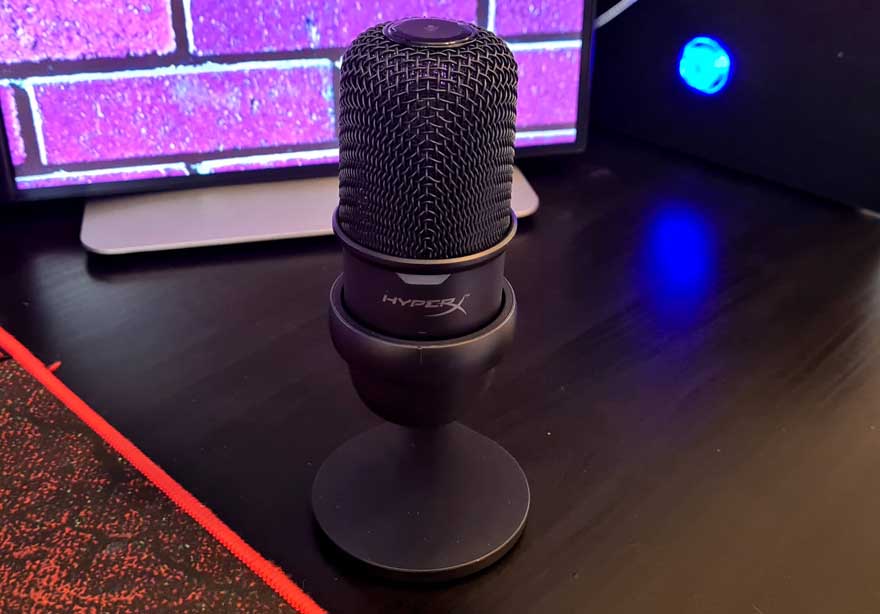
It really does look superb in the mount though. There are no harsh edges to it, with all the metalwork trimmed and rolled to give it a much softer look overall. As you can see, everything is finished in either a glossy black, or a matte textured black, giving it a premium quality look and feel.
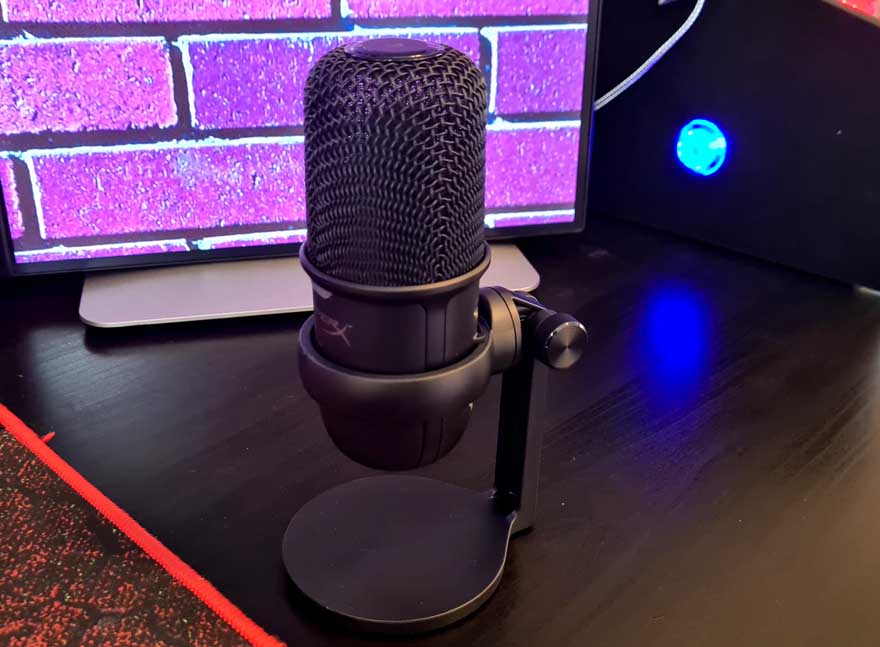
The stand may not be particularly tall, but it doesn’t need to be. The microphone only has one pickup pattern. It’s a Cardioid pattern, so it’s design to basically sit on the desk just front of you and can be a couple of feet away without issue. My point is, you don’t need this one right up in your face for it to work well.
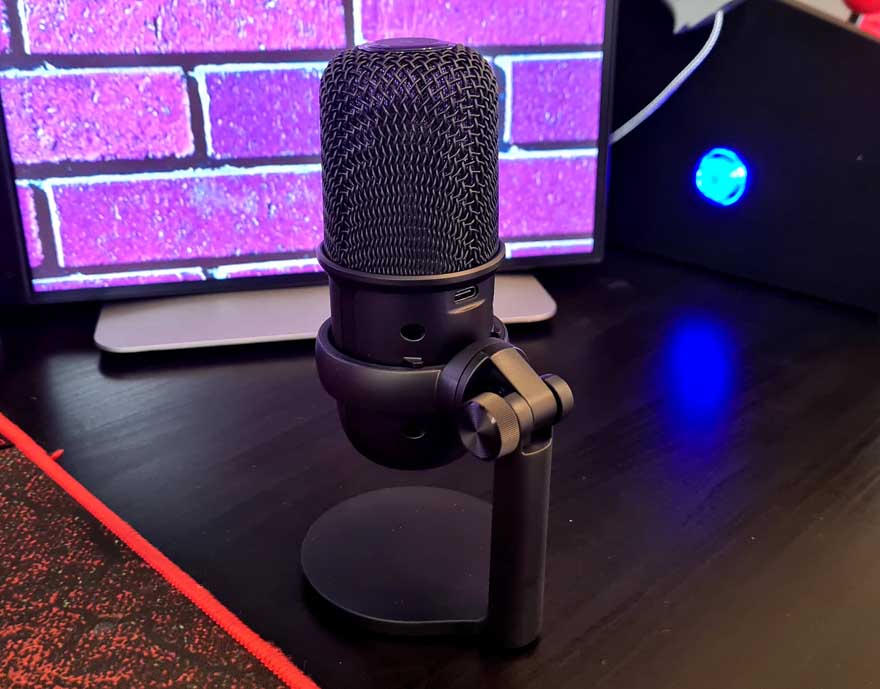
When you do want to make a bit of adjustment, there’s a really nicely made wheel on the back. Give it a spin and you can tilt the microphone away from you as required.

Also around the back, you’ll find the USB-C port. This is the only input/ouput on the microphone, it has no built-in headphone port for monitoring. However, it’s just a plug and play ready configuration too, which is awesome. Plus, with it being USB, you can replace the cable with your own custom one, a longer one, shorter, etc as you see fit. A 2m cable is included, which is plenty, but I would like to see that changed to a 3m cable like we had with the QuadCast microphone.

Finding the right position for your work really couldn’t be easier. There are some best-practice rules to follow with microphone placement, and plenty of guides are available on YouTube and beyond. However, a bit of trial and error is often best. It’s easy to make angle adjustments to suit your needs. Keep in mind though, this is a SoloCast and in solo, single, one person… So if you’re planning to do interviews, you’ll want the more advanced QuadCast microphone, which I’ll also link on the last page of this review for you.

One welcome feature is that it supports both small and large fitting tripods and mounts. The included stand is great for desktop use, but if you want it mounting above you on an adjustable arm or a floor stand, then at least you can do that.

If I hold it up to the light, you can actually see the microphone behind that mesh. There’s a fairly simple built-in pop filter, but overall, the microphone element is fairly exposed. As I said before, though, this isn’t a microphone to breathe into as you’re speaking, its pickup pattern is designed to sit further back on your desk so a pop filter isn’t really required in the traditional sense.

Overall, the setup is really easy and it was plug and play as HyperX said. OBS, Twitch, YouTube, anything really all see it as an input device with zero fuss. You can use sample rates of 48kHz, 44.1kHz, 32kHz, 16kHz, and 8kHz albeit I can’t see any reason why you wouldn’t just use the top one. It has a bit-depth of 16-bit too. While that’s not as high-end as you can go, it’s honestly plenty and sounded really crisp and clean even just using it for a bit of Discord chatter.
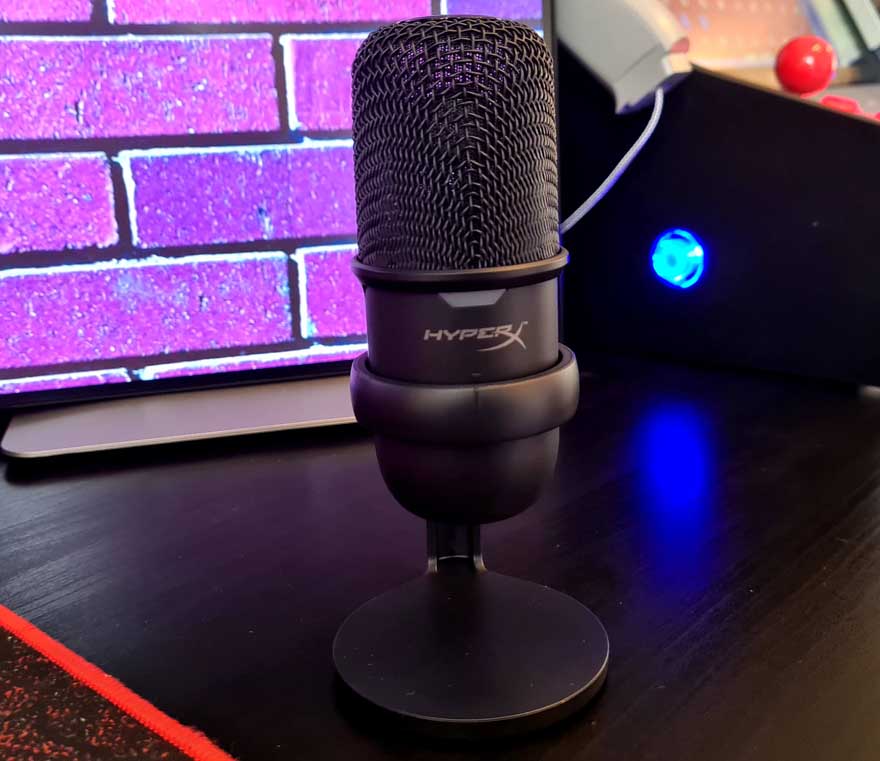
You won’t want to have it right next to your keyboard if you’re typing, but you can just as easily place it off to the side. What’s fantastic is that it has a locking tilt system built into it.
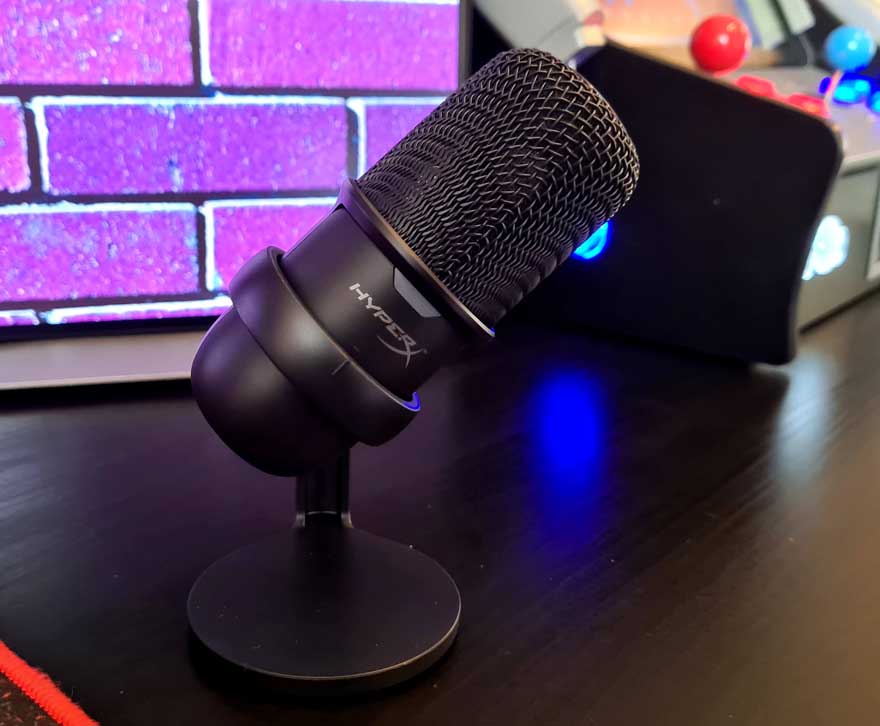
You can even put it fully on its side.

Then lift it up a little higher and still have it on its side.

It turned out that my best location was to the right of my mouse, tilted left towards me but also leaning back. Again, it helps to experiment with these things.

I’d likely swap this cable out for a more flexible braided one, not that there’s anything wrong with this cable, but it does stick out a bit. You could give it some manual bending to get that under control though.

Beyond that, it’s really easy to use. There’s a red “live” indicator on the front.
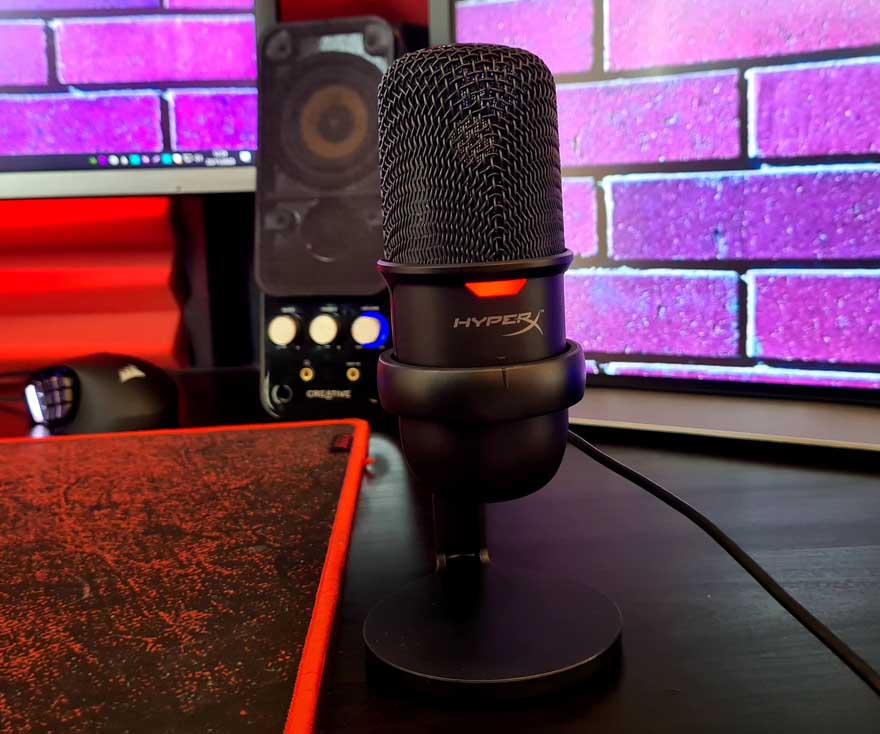
Plus a touch sensitive mute button on the top. It really is that simple.

Plus, it makes a great addition to my desktop. Not only does it work really well, I think it looks cool too!




















